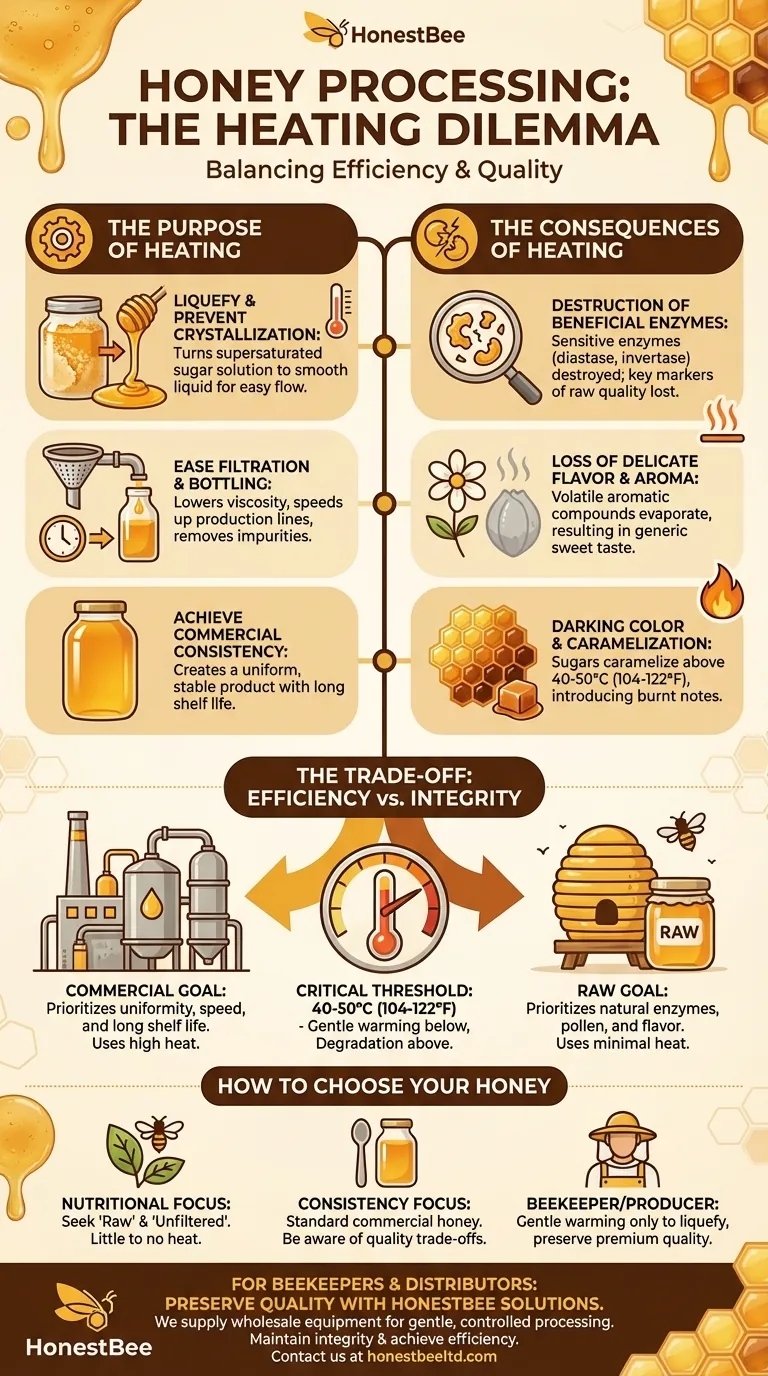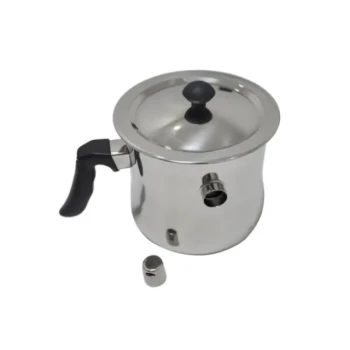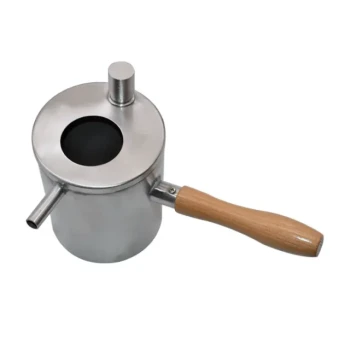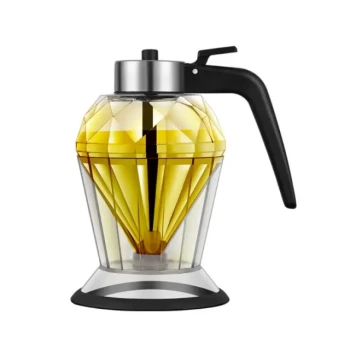In honey processing, heat is a tool of convenience and industrial efficiency. It is applied for one primary reason: to melt crystallized honey, making it less viscous and easier to filter, handle, and bottle. While this simplifies production, applying excessive heat fundamentally alters the honey, degrading its natural quality.
The decision to heat honey represents a fundamental trade-off between preserving its raw, natural state and optimizing it for large-scale commercial production. Understanding this conflict is the key to distinguishing between a minimally processed food and a standardized commercial product.

The Purpose of Heating in Honey Processing
Heat is introduced into commercial honey processing to solve logistical challenges related to honey's natural physical state. It streamlines operations from extraction to bottling.
To Liquefy and Prevent Crystallization
Honey is a supersaturated sugar solution that naturally crystallizes over time. Heating reverses this process, returning the honey to a smooth, liquid state that many consumers prefer visually and is easier to pour.
This liquefaction ensures the honey flows easily through the pipes, pumps, and filters of an industrial honey processing machine.
To Ease Filtration and Bottling
Warm, liquid honey has a much lower viscosity than cool, thick honey. This makes it significantly easier to filter out impurities like wax particles and to bottle efficiently, increasing the speed and output of production lines.
The Unavoidable Consequences of Heating
While heat solves processing problems, it causes irreversible damage to the delicate chemical composition of honey. The level of damage is directly related to the temperature and duration of heating.
Destruction of Beneficial Enzymes
Raw honey contains natural enzymes, such as diastase and invertase, which are introduced by bees. These enzymes are a key marker of high-quality, unprocessed honey, but they are extremely sensitive to heat and are easily destroyed.
Loss of Delicate Flavor and Aroma
The unique and subtle flavors of different honey varietals come from volatile aromatic compounds. High temperatures cause these delicate compounds to evaporate, resulting in a loss of distinct flavor and aroma, leaving behind a more generic, sweet taste.
Darkening Color and Caramelization
When heated, the natural sugars in honey begin to caramelize. This process, occurring above 40-50°C (104-122°F), darkens the honey's color and can introduce slightly burnt or bitter flavor notes, altering it from its original state.
Reduction in Overall Quality
The combination of lost enzymes, diminished aroma, and altered flavor profile constitutes a significant reduction in the honey's overall quality. While still a sweetener, it is no longer the complex, natural product it was in the hive.
Understanding the Trade-offs: Efficiency vs. Integrity
The choice to use heat is not arbitrary; it reflects a different end goal for the final product.
The Goal of Commercial Processing
The primary objective of large-scale commercial processing is to create a uniform, stable, and visually appealing product. A long shelf life without crystallization is paramount. Heat is an essential tool for achieving this consistency and efficiency at an industrial scale.
The Goal of Raw Honey
The goal of "raw" honey production is to preserve the honey as it exists in the hive. This means retaining all its natural enzymes, pollen, antioxidants, and complex flavors. This approach prioritizes nutritional and sensory integrity over industrial convenience.
The Critical Temperature Threshold
The melting point for honey crystals is between 40°C and 50°C (104°F and 122°F). Gentle warming below this range may be used to aid bottling with minimal damage. However, many industrial processes use much higher temperatures (pasteurization), which rapidly accelerates the degradation of the honey's quality.
How to Choose Honey Based on Your Goal
Your choice depends on what you value most: convenient texture and consistency or maximum nutritional and sensory integrity.
- If your primary focus is nutritional benefit and complex flavor: Seek out honey specifically labeled "raw" and "unfiltered," which implies that little to no heat was used in its processing.
- If your primary focus is a consistent liquid texture for cooking or general sweetening: A standard, commercially processed honey will meet your needs, but be aware of the trade-offs in quality and flavor.
- If you are a beekeeper or small-scale producer: Consider gentle warming only to the point of liquefaction to preserve the premium quality of your product while making it manageable.
By understanding the function and impact of heat, you can make an informed decision that aligns perfectly with your specific needs.
Summary Table:
| Purpose of Heating | Key Effects on Honey |
|---|---|
| Liquefies crystallized honey | Destroys beneficial enzymes (e.g., diastase) |
| Eases filtration & bottling | Loss of delicate flavor and aroma compounds |
| Prevents crystallization | Darkens color via caramelization |
| Increases production efficiency | Reduces overall nutritional & sensory quality |
For Beekeepers & Distributors: Preserve Quality with the Right Equipment
Understanding the trade-offs of heating is crucial for producing premium honey. At HONESTBEE, we supply commercial apiaries and beekeeping equipment distributors with wholesale-focused solutions designed for gentle, controlled processing. Our equipment helps you maintain the integrity of your raw honey while achieving the efficiency your operation requires.
Let us help you source the right tools to protect your product's quality. Contact our experts today for a consultation.
Visual Guide

Related Products
- 10L Stainless Steel Electric Honey Press Machine
- Beeswax Melter for Candle Making Honey Bee Wax Melter
- Easy Use Manual Stainless Steel Honey Press for Honey Comb
- Stainless Steel Manual Honey Press with Guard for Pressing Honey and Wax
- Natural Wood Honey Dipper for Tea Coffee and Desserts
People Also Ask
- What are the main differences between centrifugal extractors and honey presses? A Guide for Commercial Apiaries
- What are the key features of the stainless steel honey press? Maximize Yield & Guarantee Purity
- How does pressed honey compare to extracted or crush-and-strain? Unlock the Full Flavor of the Hive
- What are the typical features and working principles of a bucket honey press? Optimize Your Honey Extraction
- What are the benefits of using a honey press for Warré or Top Bar beehives? Maximize Your Natural Harvest



















